Welcome to an exciting journey through the sunny coasts of Florida, where the skies come alive with the graceful presence of seabirds.
In this article, we’ll delve into the captivating world of 15 fascinating seabird species that call Florida’s coastal paradise their home.
From the elegant wading birds to the fearless oceanic wanderers, get ready to discover the diverse and colorful seabirds that thrive in this beautiful state.
So, let’s spread our wings and dive right in!
| Image | Bird | Features | Price |
|---|---|---|---|
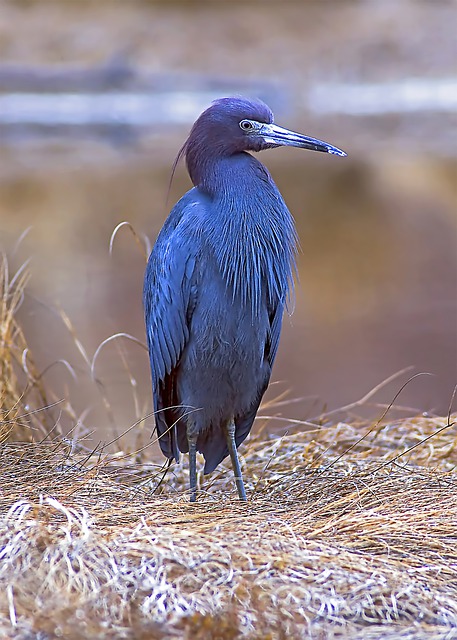 |
| 9.7 | Check Price |
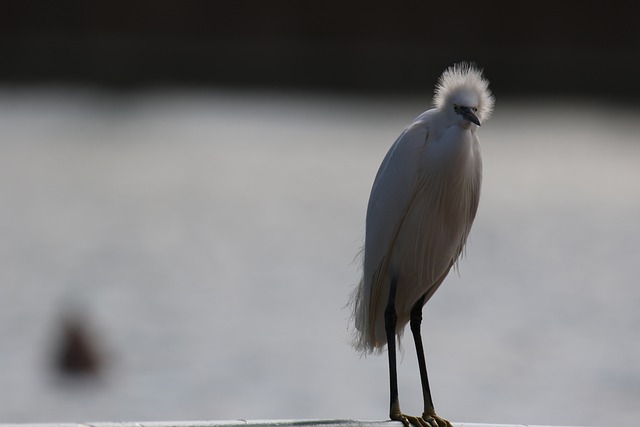 |
| 9.5 | Check Price |
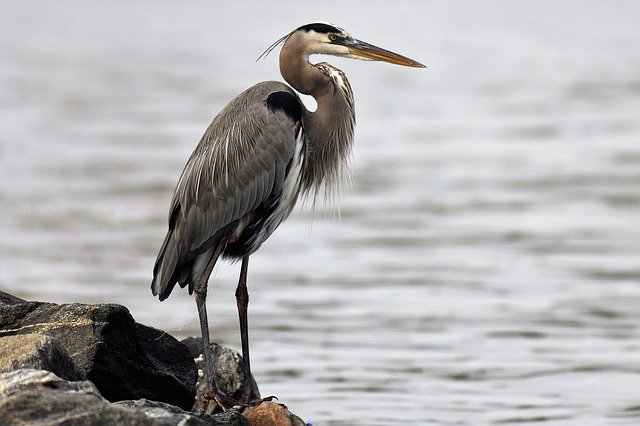 |
| 9.1 | Check Price |
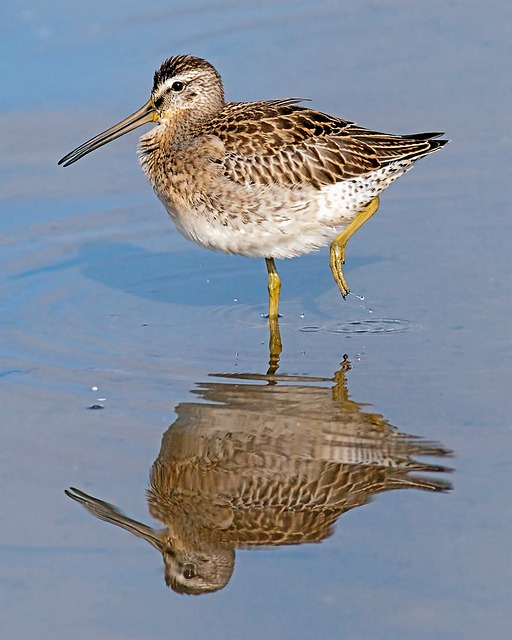 |
| 8.8 | Check Price |
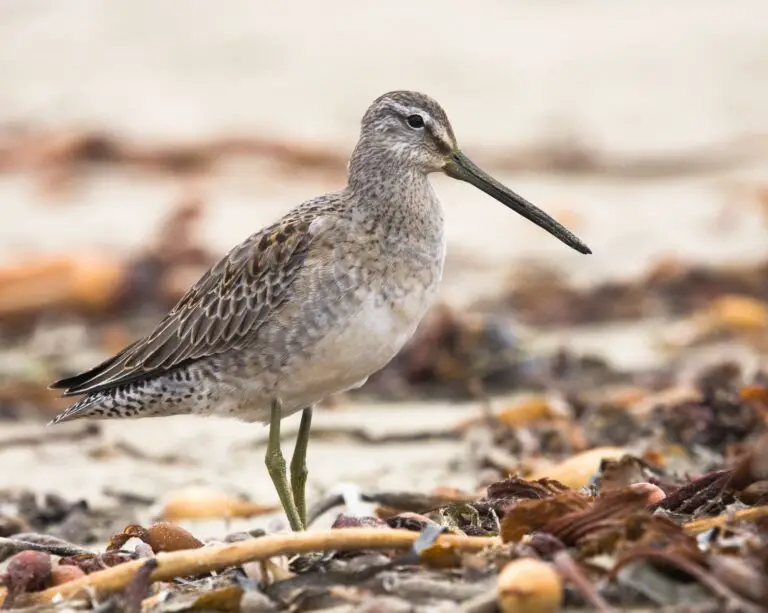 |
| 8.6 | Check Price |
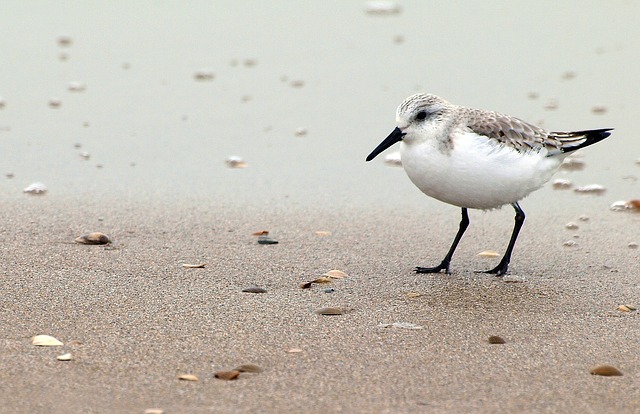 |
| 8.2 | Check Price |
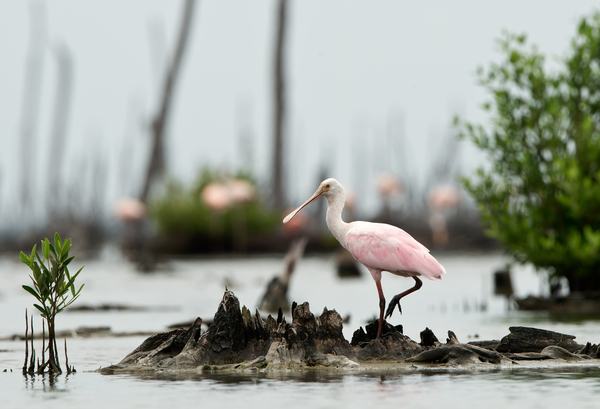 |
| 8 | Check Price |
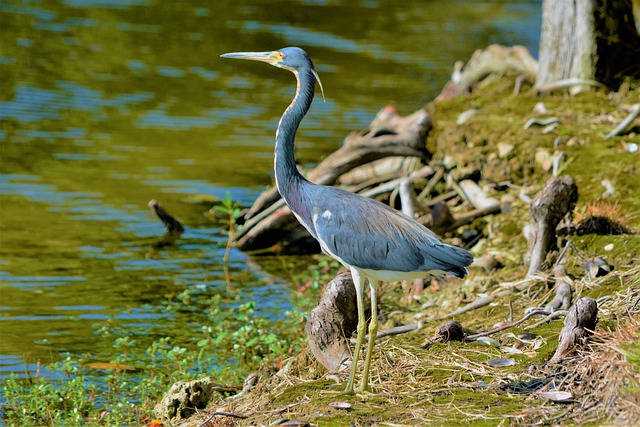 |
| 7.7 | Check Price |
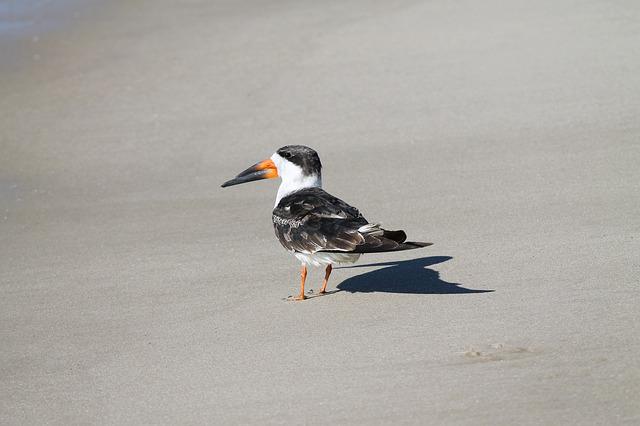 |
| 7.4 | Check Price |
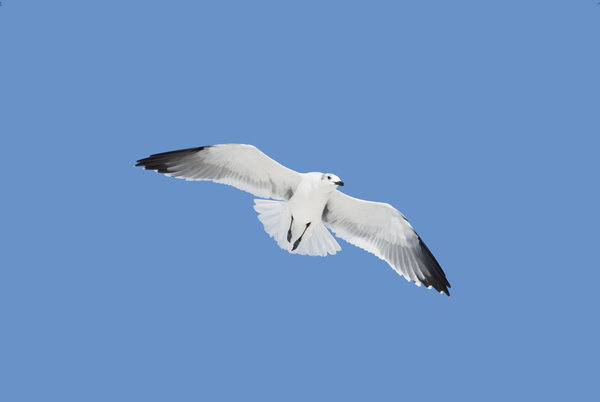 |
| 7.2 | Check Price |
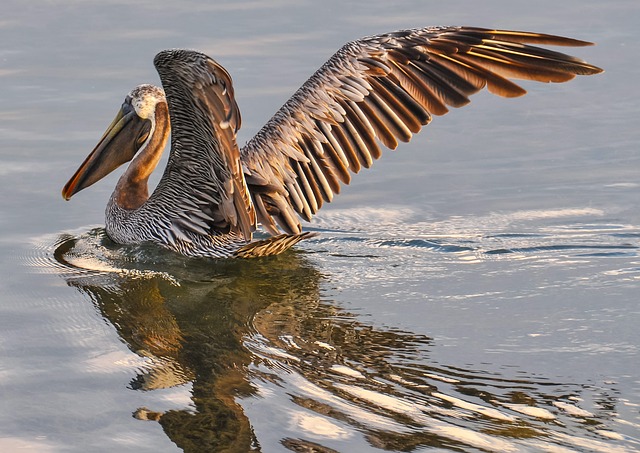 |
| 9.5 | Check Price |
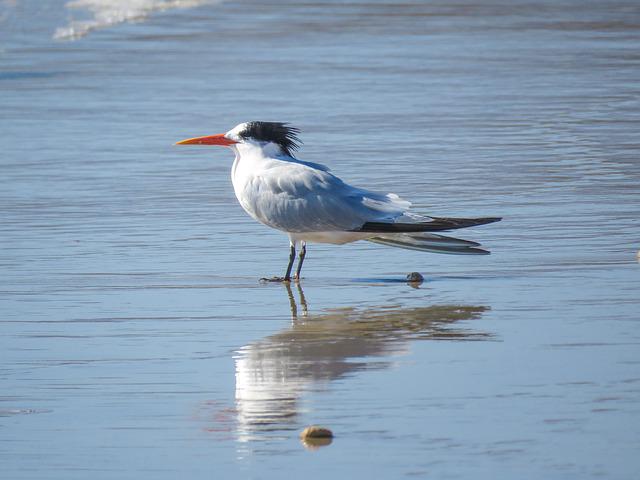 |
| 9.5 | Check Price |
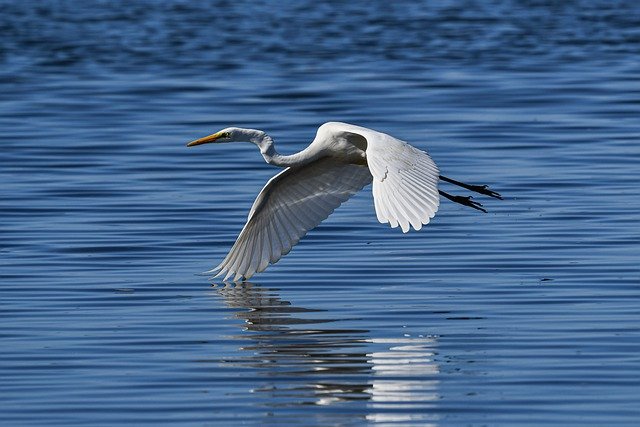 |
| 9.5 | Check Price |
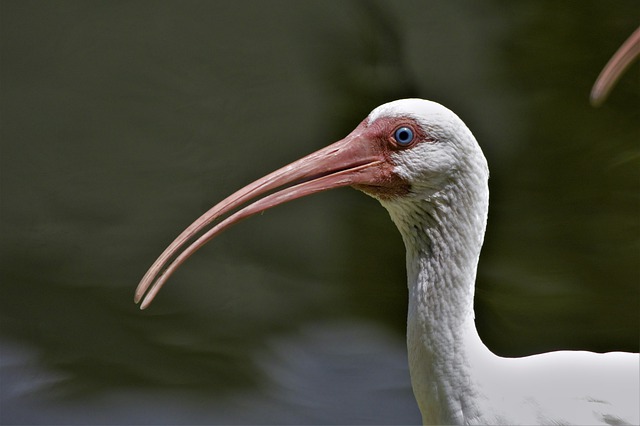 |
| 9.5 | Check Price |
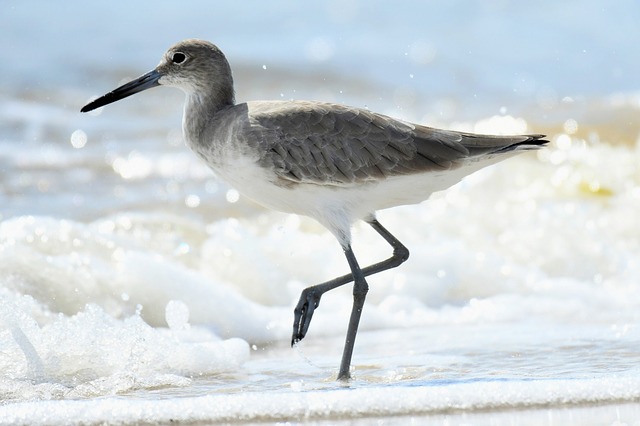 |
| 9.5 | Check Price |
If you don’t have the time to read the whole article, check out this video on Seabirds in Florida for a quick understanding.
Types of Seabirds in Florida
1. Little Blue Heron

The oddest feature of blue herons is their lovely bluish-purple plumage.
They’re plentiful along the beach, although they normally keep to themselves by moving and foraging very quietly.
Look at how Little Blue Herons move when foraging to tell them from their cousins.
They forage alongside white herons and egrets most of the time.
They predominantly consume salmon and other invertebrates, but they can also consume insects, tadpoles, and turtles.
Egretta caerulea (Little Blue Heron) is a little, bluish-colored heron.
The mating birds have exquisite plumes and reddish-buff necks.
Their beak is similarly blue with a black tip on the top of their heads. And, as you might expect, these birds are not quite as large as the Great Blue Heron, with a wingspan of approximately 40 inches, and the approximate length of its body is around about 27-30 inches.
The Little Blue Heron hunts for fish, amphibians, and crustaceans in not-so-deep waters of inland rivers, lakes, ponds, and marshes.
Below are the characteristics of the Little Blue Heron,
| Scientific Name | Egretta caerulea |
| Family Name | Ardeidae |
| Length | 55 – 70 cm (22 – 28 in) |
| Weight | 325 – 525 grams (11.5 – 18.5 oz) |
| Wingspan | 91 – 104 cm (36 – 41 in) |
| Habitat | Coastal areas, saltwater and freshwater marshes, mangroves, and swamps |
| Food | Fish, crustaceans, insects, and small aquatic prey |
2. Snowy Egret

The Snowy Egret (Egretta thula) is a graceful white tropical bird smaller than herons but has a body shape comparable to that of the Great White Heron.
This stunning bird has a black beak and stark white feathers with long black limbs, nearly fluorescent yellow feet, and subtle yellow characteristics on the face.
In the late 1800s and early 1900s, Snowy Egrets were nearly extinct.
Their breeding plumes were in high demand as hat decorations for women.
Today, they can be found scouring ponds, lakes, streams, wetlands, swamps, and tidal flats seeking food.
Prawns, fishes, crustaceans, crabs, worms, snakes, and tiny frogs are their favorite foods.
Their length ranges from 56 to 66 cm, and their wingspan is 100cm.
These birds weigh up to 370 grams.
Below are the characteristics of the Snowy Egret,
| Scientific Name | Egretta thula |
| Family Name | Ardeidae |
| Length | 55 – 66 cm (22 – 26 in) |
| Weight | 270 – 475 grams (9.5 – 16.8 oz) |
| Wingspan | 88 – 102 cm (35 – 40 in) |
| Habitat | Wetlands, marshes, tidal flats, coastal areas, and estuaries |
| Food | Fish, crustaceans, insects, frogs, and small aquatic creatures |
3. Great Blue Heron

The Great Blue Heron (Ardea Herodias) is a huge solitary bird with elegant flight.
It’s a bluish-grayish heron with a largely white face and yellow beak.
They are North America’s biggest heron.
The Great Blue Heron is a huge bird with a wingspan of up to 6 and a half feet and a body length of 54 inches.
Fish, water invertebrates, and occasionally small mammals such as moles and voles are eaten by the Great Blue Heron.
They hunt for food in the shallows, freshwater, lakes, and marshes.
Their length ranges from 97 to 137 cm, and they can weigh up to 2500 grams.
Their wingspan is round about 200 cm.
Below are the characteristics of the Great Blue Heron,
| Scientific Name | Ardea herodias |
| Family Name | Ardeidae |
| Length | 97 – 137 cm (38 – 54 in) |
| Weight | 2 – 3.6 kg (4.4 – 7.9 lbs) |
| Wingspan | 167 – 201 cm (66 – 79 in) |
| Habitat | Wetlands, marshes, lakes, rivers, and coastal areas |
| Food | Fish, frogs, small mammals, insects, and occasionally reptiles and birds |
4. Short-billed Dowitcher

Compared to the Large-billed Dowitcher’s bill (Limnodromus griseus), the Short-billed Dowitcher (Limnodromus griseus) has a shorter bill.
A chubby, magnificent red, golden, and brown shorebird with a long bill.
They enjoy marshes, coastal mudflats, flooded farms, and even sewage ponds in Florida.
They explore for food like a sewing machine by thrusting their beak straight up and down.
Below are the characteristics of the Short-billed Dowitcher,
| Scientific Name | Limnodromus griseus |
| Family Name | Scolopacidae |
| Length | 25 – 31 cm (9.8 – 12.2 in) |
| Weight | 75 – 115 grams (2.6 – 4.1 oz) |
| Wingspan | 42 – 47 cm (16.5 – 18.5 in) |
| Habitat | Mudflats, salt pans, marshes, and estuaries |
| Food | Invertebrates, insects, crustaceans, and mollusks |
5. Long-billed Dowitcher
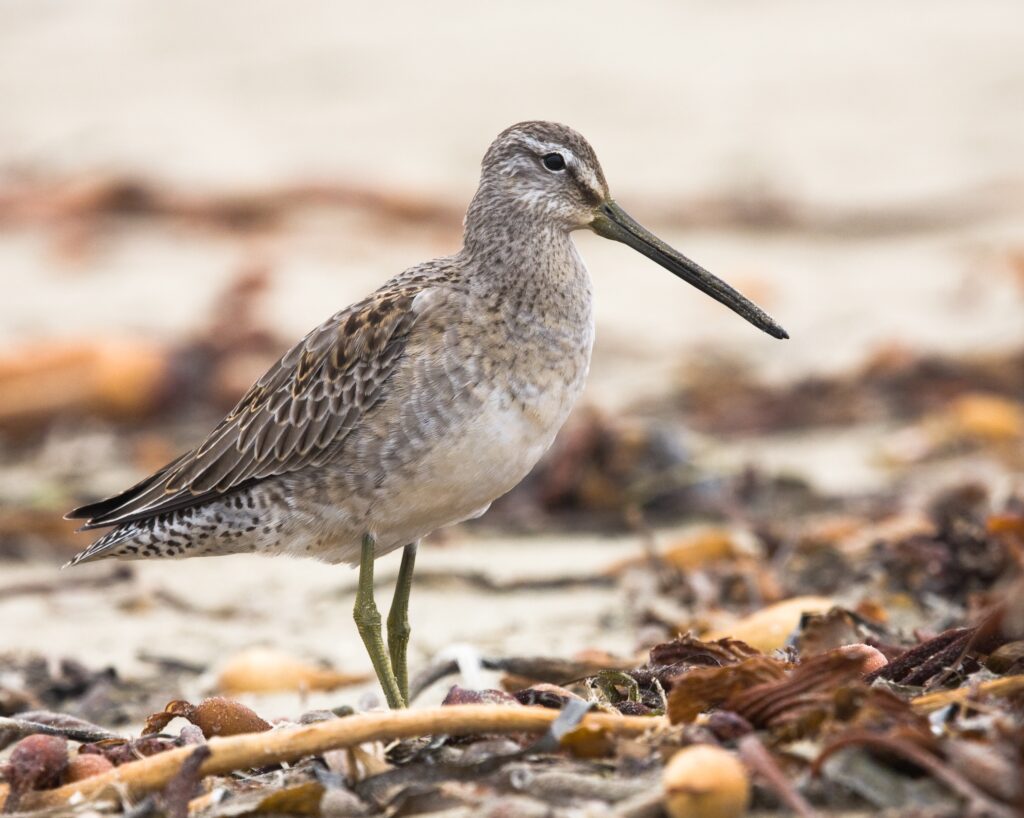
The Long-billed Dowitcher (Limnodromus scolopaceus), which has the longest bill of the two, pokes and probes the sand in the same manner as the other two.
However, listening to Dowitchers rather than glancing at their invoices is perhaps a better way to tell them distinct.
They can measure up to 29cm, their wingspan length is 49 inches, and they weigh up to 131 grams.
Below are the characteristics of the Long-billed Dowitcher,
| Scientific Name | Limnodromus scolopaceus |
| Family Name | Scolopacidae |
| Length | 28 – 33 cm (11 – 13 in) |
| Weight | 85 – 170 grams (3 – 6 oz) |
| Wingspan | 46 – 53 cm (18 – 21 in) |
| Habitat | Mudflats, salt pans, marshes, and coastal wetlands |
| Food | Invertebrates, insects, crustaceans, and small mollusks |
6. Sanderling

Sanderlings are little sandpipers with a penchant for chasing waves.
They’re frequently seen along the beach, digging back and forth, searching for little food.
The bills and legs of sanderlings are distinctively black.
Their tail and back have black stripes, and their plumage is light white and brown.
Sanderlings are among the most common seabirds seen along the beach in Florida.
Sanderlings eat insects, worms, and algae, among other things.
On the other hand, Sanderlings cruise the beach in search of beach crabs or other delicious crustaceans.
You may catch a marvelous low-display flight during the breeding season as the male Sanderling tries to impress his potential partner.
The male lets out sharp chirring calls and waits till the female glides to the ground.
Then, he’ll approach her with ruffled feathers and a hunched-down head.
During the mating season, the male Sanderling may do a spectacular low demonstration fly to impress his probable spouse.
The male makes sharp chirping calls while waiting for the female to glide to the ground.
Then, it will approach her with his disarranged feathers and a bent head.
Sanderlings, sometimes known as “peeps,” are seabirds with black bills, dark eyes, and short, black legs.
You’ll know who they are when you spot them along the water’s edge, probing around in the damp sand for food.
Below are the characteristics of the Sanderling,
| Scientific Name | Calidris alba |
| Family Name | Scolopacidae |
| Length | 18 – 20 cm (7.1 – 7.9 in) |
| Weight | 40 – 100 grams (1.4 – 3.5 oz) |
| Wingspan | 32 – 36 cm (12.6 – 14.2 in) |
| Habitat | Sandy beaches, shorelines, and coastal areas |
| Food | Insects, crustaceans, mollusks, and small marine invertebrates |
7. Roseate Spoonbill

Roseate Spoonbills may now be seen in Texas, and Florida Roseate Spoonbills are undeniably strange when seen up close.
They have a partially hairless head and vivid pink plumage.
Roseate Spoonbills, like humans, go through balding when they lose all of the feathers on a portion of their heads as they get older.
Roseate Spoonbills forage similarly to Black Skimmers.
They swim in shallow water, skimming the surface with their lower mandible.
They grab their prey primarily using their sense of touch; however, they utilize their eyesight occasionally.
Next to the Flamingo, the Roseate Spoonbill (Platalea ajaja) is among the gorgeous coast and marsh birds you’ll encounter in Florida.
Because of their beautiful pink plumage, they are sometimes mistaken for Flamingos.
The lengthy wandering bird in lakes, marshes, intercostal waterways, estuaries, and ponds.
They move back and forth in a sweeping manner, and if a fish or bug is caught between their strong mandibles, it will clamp its bill shut, and the fish or bug is swallowed.
Below are the characteristics of the Roseate Spoonbill,
| Scientific Name | Platalea ajaja |
| Family Name | Threskiornithidae |
| Length | 71 – 86 cm (28 – 34 in) |
| Weight | 1.2 – 1.8 kg (2.6 – 4 lbs) |
| Wingspan | 120 – 133 cm (47 – 52 in) |
| Habitat | Coastal lagoons, marshes, mangroves, and wetlands |
| Food | Small fish, crustaceans, insects, and aquatic invertebrates |
8. Tricolored Heron

Tricolored Herons have long necks, beaks, and legs, and their bodies are quite slim.
It has an exquisite plume, a blend of lavender, white and blue-gray.
This makes them look a lot like Little Blue Herons.
They will sometimes stay immobile and watch for the target to approach them.
When foraging, a Tricolored Heron may be identified because it starts churning the sediments with one of its feet.
While hunting from the skies, they’re more active, darting into the water to seek schools of fish.
Forages alone or towards the edge of diverse wading bird flocks.
Gently stalks fish or pirouettes, stopping and turning with fluttering wings.
Flies with their heads tucked in and their feet trailing behind them.
Below are the characteristics of the Tricolored Heron,
| Scientific Name | Egretta tricolor |
| Family Name | Ardeidae |
| Length | 58 – 76 cm (23 – 30 in) |
| Weight | 270 – 510 grams (9.5 – 18 oz) |
| Wingspan | 96 – 102 cm (38 – 40 in) |
| Habitat | Marshes, swamps, estuaries, and coastal shorelines |
| Food | Fish, crustaceans, insects, and small aquatic animals |
9. Black Skimmer

Black Skimmers are among the most stunning birds to be seen along Florida’s coast.
They’re only found along the coasts of North America, and they’re very popular in Florida.
Black Skimmers may be seen in flocks on the seashore, flapping their wings.
With a black-and-red beak and orange-red legs, it is completely black above it and white below.
Juveniles have pale-edged wings and covert feathers and are brownish above.
Their food consists primarily of fish, with some crustaceans thrown in.
Black Simmers do not dive for fish as terns do. Instead, they hover near the water’s edge and sink their lower jaw.
Black Simmers snap their upper jaw to capture a fish as soon as caught.
What’s fascinating about them is that they can catch fish using their sense of smell rather than their eyesight.
Skimmers have a peculiar flight style in which they fly low to the ground, using lengthy upstrokes but quick downstrokes to keep them out of the water.
The flight takes on a distinct ranging style as a result of this.
Below are the characteristics of the Black Skimmer,
| Scientific Name | Rynchops niger |
| Family Name | Laridae |
| Length | 40 – 50 cm (16 – 20 in) |
| Weight | 210 – 425 grams (7.4 – 15 oz) |
| Wingspan | 107 – 127 cm (42 – 50 in) |
| Habitat | Coastal beaches, sandbars, and estuaries |
| Food | Fish, crustaceans, and small aquatic creatures |
10. Laughing Gull

These birds have a distinctive sound that reminds me of Florida summers.
This Gull has sharp blackhead, grayish-black wings, and a grayish-black back.
Diving, wading, flying, or strolling, Laughing Gulls forage.
Fish, beetles, and crustaceans are among their favorite foods.
They’ve also been observed eating the eggs of other birds, such as Royal Terns.
When a Laughing Gull spots a target in the water, it dives to the surface and grabs it.
It may also take food from another bird’s bill or land on its head to steal it.
Laughing Gulls, like other gulls, establish a colony of nests near one another.
Their nests are situated among bushes, vines, or plants on the ground.
Laughing Gulls are more likely to be seen in the dark, especially during mating.
When it’s dark, they prefer to feed near the beach, and they never capture insects during the day.
Below are the characteristics of the Laughing Gull,
| Scientific Name | Leucophaeus atricilla |
| Family Name | Laridae |
| Length | 36 – 41 cm (14 – 16 in) |
| Weight | 190 – 300 grams (6.7 – 10.6 oz) |
| Wingspan | 98 – 110 cm (39 – 43 in) |
| Habitat | Coastal areas, beaches, and estuaries |
| Food | Fish, insects, crustaceans, and scavenged scraps |
11. Brown Pelican

They are large seabirds with a stocky appearance.
When gliding, they have a lengthy wingspan.
Brown Pelicans are massive seabirds with a stocky build.
They have long bills and narrow necks, and an elastic throat pouch for catching fish.
Their wings are extraordinarily large and wide whenever the birds are gliding, and they are often clearly bent.
As adults, Brown Pelicans have gray-brown bodies, yellow heads, and white necks.
The sides of the throat become a rich, deep red in breeding plumage.
Pale atop with a faint yellowish belly and breast in immatures.
Brown Pelicans feed by diving into the water and stunning tiny fish with their massive bodies before picking them up in their inflatable throat pouches.
Pelicans rest on docks and coastlines when they are not foraging or they patrol the shoreline.
Pelicans fly on their big wings in flight, typically riding updrafts along wave walls or cliffs.
The flapping of their wings is slow but strong and deep.
Brown Pelicans can be found around the southern and western seacoasts, although they are rarely observed inland.
They lay their eggs in colonies, generally on remote islands where they are safe from terrestrial predators.
Below are the characteristics of the Brown Pelican,
| Scientific Name | Pelecanus occidentalis |
| Family Name | Pelecanidae |
| Length | 106 – 137 cm (42 – 54 in) |
| Weight | 2 – 5.5 kg (4.4 – 12.1 lbs) |
| Wingspan | 198 – 218 cm (78 – 86 in) |
| Habitat | Coastal areas, bays, estuaries, and mangroves |
| Food | Fish (primarily small schooling fish) |
12. Royal Tern

The Royal Tern is a tall and elongated bird with a black crest and widespread wings.
They have white plumage with grey undersides.
Their legs are short, and their tails are forged.
Royal Terns are frequently seen along the water’s edge and on sandy beaches.
They hunt for food by hovering low and looking for it.
They dive some inches just below the water’s surface when they find prey to capture.
Royal Terns have been known for stealing meals from other birds, particularly smaller birds.
They prefer to feed in the dark and have been seen to snag flying fish in mid-flight.
Many tropical places, including Hawaii, have them.
Tiny fish and crabs make up their food. Shrimp, squid, and other crustaceans are also eaten.
Royal Terns are highly gregarious birds that breed in dense colonies.
The male and female courting occurs in high-altitude spiraling.
On the other hand, Royal Terns have a quicker, more floating flight.
They have a slimmer, narrower body.
Terns have sharp beaks and forked tails.
They have an orange beak and a shaggy blacktop.
Terns may hover 10 to 30 ft above the sea for a brief moment before gracefully diving into the waves to snag a fish.
The Royal Tern is the biggest of the terns.
The Royal Tern prefers to be near large amounts of water.
They eat fish and crabs there.
Below are the characteristics of the Royal Tern,
| Scientific Name | Thalasseus maximus |
| Family Name | Laridae |
| Length | 43 – 50 cm (17 – 20 in) |
| Weight | 350 – 450 grams (12 – 16 oz) |
| Wingspan | 99 – 111 cm (39 – 44 in) |
| Habitat | Coastal beaches, sandbars, and estuaries |
| Food | Fish, crustaceans, and small aquatic creatures |
13. Great Egret

The Great Egret is a big bird with long legs and an S-shaped neck.
They have feathers, yellow beaks, and black legs similar to swans.
Because they are colonial nesters, they can be found in high numbers along beaches and other watery areas.
They’re also found in Hawaii.
Whenever the prey is close enough, Great Egrets seize it with a rapid thrust of their beak.
They, like Laughing Gulls, have a habit of stealing meals from other birds.
Great Egrets were formerly an uncommon sighting in the United States, but they’ve begun to rebound because of improved conservation efforts.
Great Egrets hunt small aquatic animals like frogs and fish in shallow water.
They usually remain motionless, waiting for unwary prey to come by.
The egrets then attack with a jab of its long neck and beak, striking with stunning speed.
Below are the characteristics of the Great Egret,
| Scientific Name | Ardea alba |
| Family Name | Ardeidae |
| Length | 81 – 101 cm (32 – 40 in) |
| Weight | 700 – 1,500 grams (1.5 – 3.3 lbs) |
| Wingspan | 131 – 170 cm (52 – 67 in) |
| Habitat | Wetlands, marshes, lakes, rivers, and coastal areas |
| Food | Fish, amphibians, reptiles, and small mammals |
14. White Ibis

The White Ibis has a football-shaped body.
It has a long neck and legs and is huge and stocky.
It has white plumage with black at the tips of its wings.
The exposed reddish-pink skin of a White Ibis head is perhaps its most distinguishing trait.
The base of the bill is reddish-pink, while the tip is black.
They are one of Florida’s most frequent birds.
It wades into shallow water and uses its bill to explore the water.
Crustaceans, insects, and tiny fish are among its favorite foods.
Below are the characteristics of the White Ibis,
| Scientific Name | Eudocimus albus |
| Family Name | Threskiornithidae |
| Length | 55 – 75 cm (22 – 30 in) |
| Weight | 900 – 1,300 grams (2 – 2.9 lbs) |
| Wingspan | 90 – 105 cm (35 – 41 in) |
| Habitat | Wetlands, marshes, swamps, and coastal areas |
| Food | Insects, small fish, crustaceans, and aquatic invertebrates |
15. Willets

Willets are most commonly found around marshes and swamps with enough shallow water to walk through.
On the other hand, these seabirds may be seen traveling down the shore.
Willets have plumage that is a blend of grey and brown, and they feed by probing the water with their beak.
Insects, particularly aquatic insects, make up the majority of their food, comprised of crustaceans, crabs, tiny fish, and fiddlers.
While standing on the coastline, it’s possible that you won’t be able to spot a Willet.
When it extends its wings, however, the characteristic black and white lines on the wings are visible.
Below are the characteristics of the Willets,
| Scientific Name | Tringa semipalmata |
| Family Name | Scolopacidae |
| Length | 37 – 41 cm (15 – 16 in) |
| Weight | 170 – 300 grams (6 – 11 oz) |
| Wingspan | 66 – 72 cm (26 – 28 in) |
| Habitat | Coastal beaches, mudflats, marshes, and estuaries |
| Food | Insects, crustaceans, small fish, and marine invertebrates |
Conclusion
In conclusion, Florida’s coastal areas offer a vibrant and dynamic ecosystem that attracts a wide array of seabird species.
From the iconic Brown Pelican, soaring gracefully over the waves, to the comical antics of the Laughing Gull on sandy shores, each seabird plays a crucial role in maintaining the delicate balance of this unique environment.
Through this journey, we’ve marveled at the remarkable adaptations and behaviors of 15 different seabirds that have made Florida their home.
These fascinating creatures demonstrate the resilience of nature and serve as a reminder of the importance of preserving their habitats for generations to come.
As we continue to appreciate and learn about these seabirds, let us also remember our responsibility to protect their nesting sites, feeding grounds, and the coastal environment they rely on.
By nurturing and safeguarding these precious spaces, we ensure that the skies of Florida will forever remain filled with the awe-inspiring beauty of seabirds, enriching our lives with their presence and enriching the natural heritage of this magnificent state.
So, let’s cherish and safeguard these magnificent creatures, as they inspire us and remind us of the wonders that nature has to offer.
Together, we can ensure that these seabirds continue to grace Florida’s coasts for generations to come.
FAQ
Where can I spot seabirds in Florida?
Seabirds can be found along Florida’s coastlines, including beaches, coastal lagoons, estuaries, and even near fishing piers. Some popular spots for seabird watching include Sanibel Island, Merritt Island National Wildlife Refuge, and the Dry Tortugas National Park.
Are all seabirds in Florida migratory?
While many seabird species in Florida are migratory and travel to different regions during certain seasons, some seabirds, like the Brown Pelican and Laughing Gull, are year-round residents.
What seabirds are known for their impressive diving abilities?
The Brown Pelican is renowned for its exceptional diving skills. It hovers above the water and then dives headfirst to catch fish, using its expandable throat pouch to scoop up its prey.
How can I identify different seabird species in Florida?
Seabirds can often be identified by their size, coloration, and distinctive features such as bill shape, leg color, and markings. Field guides or birding apps can be helpful tools for identifying seabirds accurately.
Do seabirds play a role in Florida's ecosystem?
Yes, seabirds play a vital role in Florida’s ecosystem. They help control marine populations by feeding on fish, crustaceans, and other marine organisms, contributing to the balance of the coastal food chain.
What threats do seabirds face in Florida?
Seabirds in Florida face various threats, including habitat destruction due to coastal development, disturbances at nesting sites, pollution, and entanglement in fishing gear.
Are there any endangered seabird species in Florida?
Yes, some seabird species in Florida, such as the Roseate Spoonbill and the Piping Plover, are considered endangered or threatened due to habitat loss and human disturbance.
When is the best time to observe seabirds in Florida?
The best time to observe seabirds in Florida is during the winter and spring months when many migratory species arrive or pass through the state. However, some species can be seen year-round.
Last Updated on July 26, 2023 by Lily Aldrin
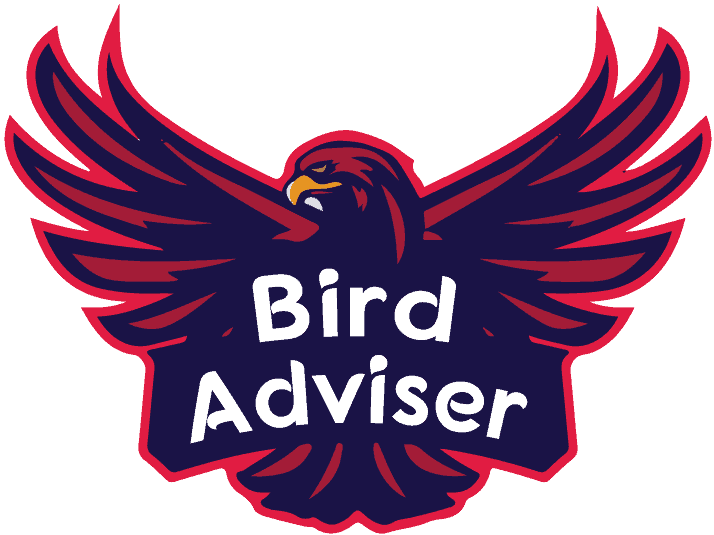
Great List; Thank you!
I found my way here after observing some Royal Terns above my home today. They have something going on in the neighboring Slash Pines. Loveyly when they are soaring above.